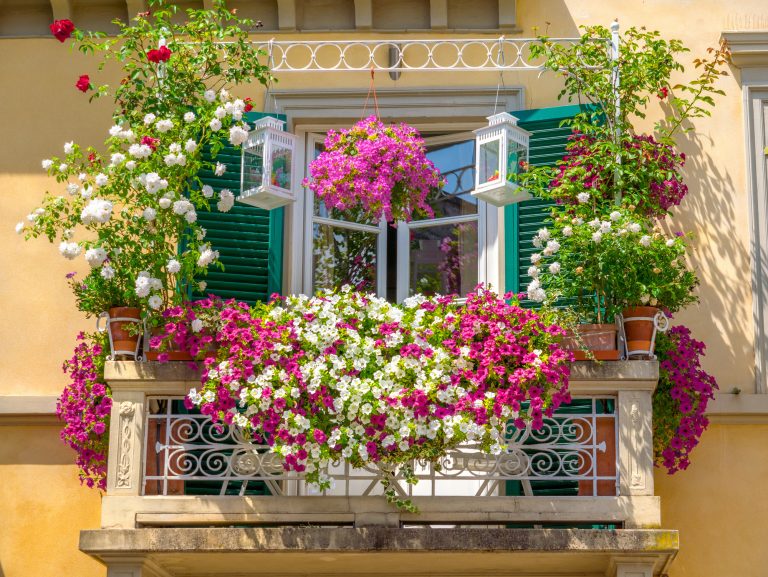When it comes to home visual appeal, it’s not just about the inside. The exterior of your home significantly contributes to its overall aesthetic appeal. Imagine a splash of vibrant colors greeting you each day as you return home. Isn’t that a delightful sight? Luckily, you can achieve this picturesque reality through a window box garden. Here’s your step-by-step guide to help you transform your façade with the lively allure of greenery.
1. Pick The Right Spot
Location is crucial in establishing your window box garden. You must choose a spot that receives a good amount of sunlight and has easy access for watering and maintenance. Plants generally need a good amount of sunlight, so south or west-facing windows can be ideal due to their exposure to afternoon sunlight. However, it ultimately depends on the climate and the specific conditions of your home.
For more tips, visit a recommended website focusing on window box gardening. It should offer valuable information about plant-specific light requirements to help you identify the most suitable location for your window box garden.
After you’ve chosen a potential spot, it’s time to decide what plants to put there.
2. Choose Your Plants

Selecting your plants is the next exciting part. When choosing plants, consider the climate and the spot you have picked. Some plants, like succulents and ferns, have different conditions for sunlight and water. By opting for plants with similar requirements, you can ensure that they will thrive together. So, it’s important to research before pairing plants together in a window box garden.
There are several types of plants suitable for window box gardens:
- Annuals: These flowers bloom in only one season and need to be replanted yearly. Flower garden enthusiasts adore them for the various colors and kinds available. Some examples of annuals include begonias, petunias, and apple blossoms.
- Perennials: Unlike annuals, perennials have a longer lifespan and bloom every year. There are also a variety of colorful flowers popular among gardeners for their low-maintenance features. Examples include asters, peonies, and hydrangeas.
- Succulents: If you prefer plants that require minimal attention, consider succulents. They’re fantastic options for first-time gardeners and people with limited time for plant maintenance. Succulents like aloe vera, jade plants, and sedums are ideal for aesthetically pleasing window box gardens.
- Herbs: Last is the humble herb. They provide texture, fragrance, and color to gardens and ingredients to restock your cupboard. It’s relatively easy for anyone, even beginners, to care for them. Try planting thyme, parsley, and oregano in a window box facing a sunny spot.
Take your time exploring local nurseries or online plant shops to find the perfect blooms and leaves for your window box garden. As a novice, you don’t need so many plants at once. Start with a few that catch your attention and learn to maintain them until you’re confident to try others.
After you’ve settled on a spot and selected your plants, it’s time to consider the very vessel for your garden: the window box.
3. Invest In Quality Window Boxes
No window box garden can thrive without a solid foundation: a high-quality window box with the right size and depth. Look for durable materials such as cedar, teak, or fiberglass that withstand weather changes. Ensure the box has ample drainage holes to prevent waterlogged roots.
Size is another factor to consider. Choose a box deep enough for your plants’ roots, wide enough for their growth, and fits snugly on your windowsill. Securely hang your window box to prevent it from falling, which could ruin all your hard work. You must secure it well since it could severely injure someone below if it drops.
Next, you need to invest in a quality potting mix, as plants cannot survive in an empty window box.
4. Use Fresh Potting Mix
Plant health significantly relies on the quality of the soil. Therefore, use a fresh, high-quality potting mix. This medium ensures proper water retention, drainage, and nutrient supply, enabling plants to flourish. Since garden soil is heavy and can lead to poor drainage, stifling your window box garden’s growth, you should avoid using it.
However, keep in mind that having good soil is only the bare minimum. Even with an ideal potting mix, your garden’s success depends on continuous, careful maintenance.
5. Maintain Your Window Box Garden Regularly
A beautiful window box garden requires regular maintenance. Set up a watering schedule based on your plants’ needs. Overwatering is as harmful as underwatering, so aim for just the right amount. Prune your plants regularly to promote healthier, abundant growth. Monitor for signs of pests or disease, acting promptly to keep your garden thriving.
Regularly providing your plants with nutrients, often through a quality fertilizer, is essential for their overall health. Use a balanced fertilizer to ensure they get the nutrients they need. Lastly, refreshing the soil and replacing worn-out plants every season will keep your window box garden vibrant year-round.
Make Your Windows Bloom
Starting a window box garden is more than a home improvement project. It’s an avenue for self-expression and a chance to connect with nature right at your window. Embrace the opportunity to add greenery and color to your simple home façade. Once you’ve gathered all the gardening essentials, prepare to invest time and effort into this rewarding activity.
Remember that a window box garden is a living art piece that reflects your creativity and care. By following this guide, your efforts will soon culminate in a lovely window box garden full of thriving flowers and shrubs fit for bouquets. Begin your gardening journey today and gradually witness the transformation of your home’s façade, one bloom at a time.

